LGI Emergency Redirection
Reduce Emergency Deparments Overcrowding with a Proven Patient Redirection Model. Watch the demonstration video today.
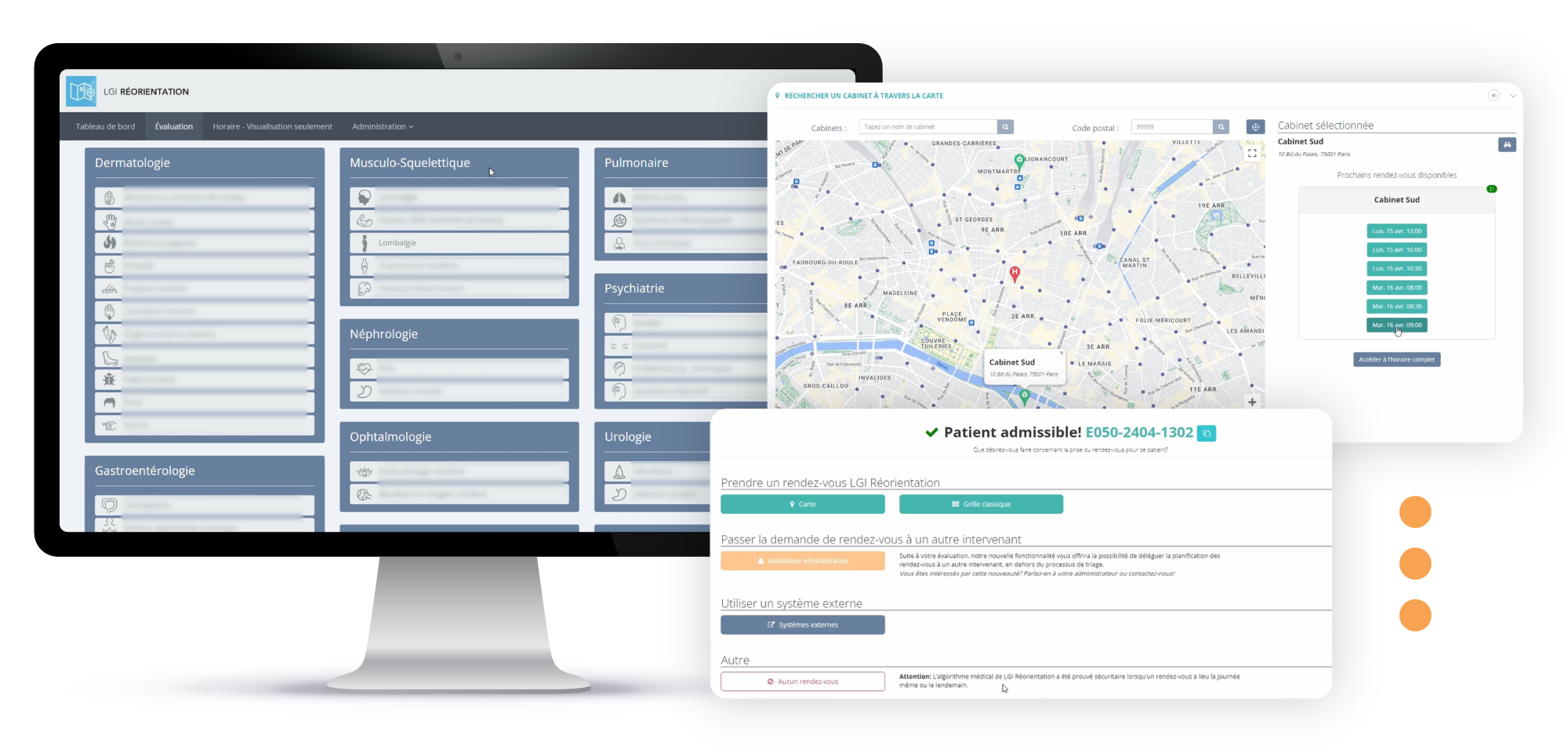
LGI Emergency Redirection helps nursing staff to identify patients who can be redirected from the emergency department to other types of care in 3 easy steps that take less than 40 seconds, reducing waiting room overflow in total safety. Would you like to see for yourself how it works? Fill out the form to receive the demonstration video by email!
Fill the form the get the demo video by email
Enhance Patient Care with a Trusted Canadian Approach
patients redirected in Canada and Europe
healthcare facilities use the solution
years of ER redirection supported by a Canadian company with +40 years of experience in healthcare IT
The 3 Simple Steps to Redirect Patients
Assessing Patient Eligibility for Redirection
Using a proven algorithm that includes 50 common consultation reasons, the solution helps the triage professional assess the patient eligibility to be redirected in just 40 secondes.
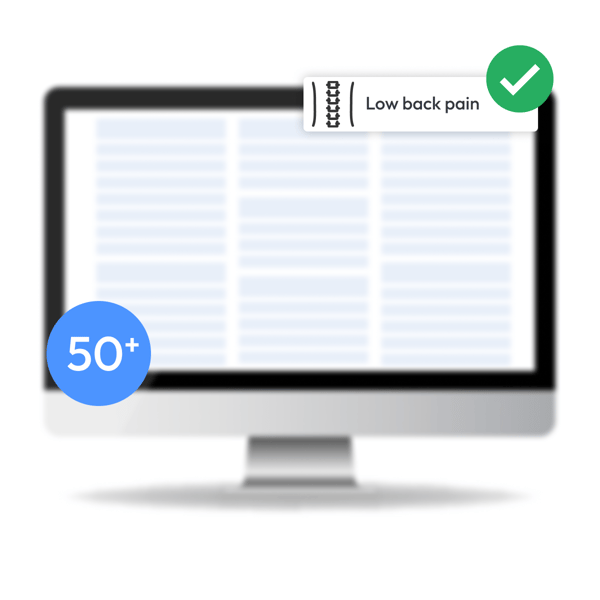
Scheduling an Appointment
The triage professional selects the appointment best suited to the patient's needs through interactive maps and an intuitive interface.
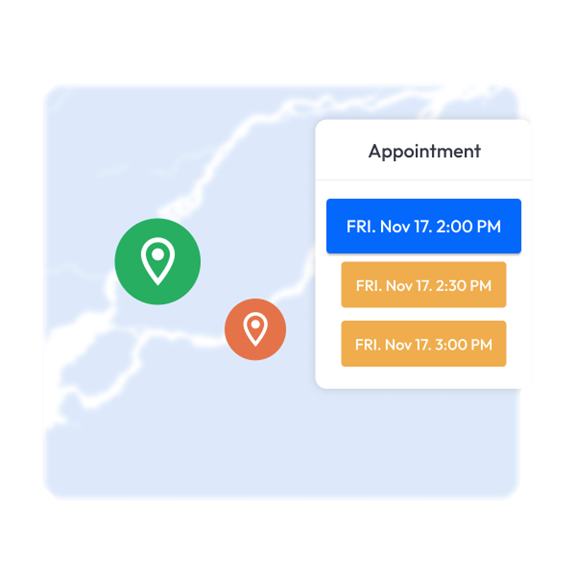
Transmission of Instructions
The patient leaves the emergency department with a referral number, appointment date and time, and directions to the selected partner clinic or healthcare facility. Priority is given to the patient's family physician.
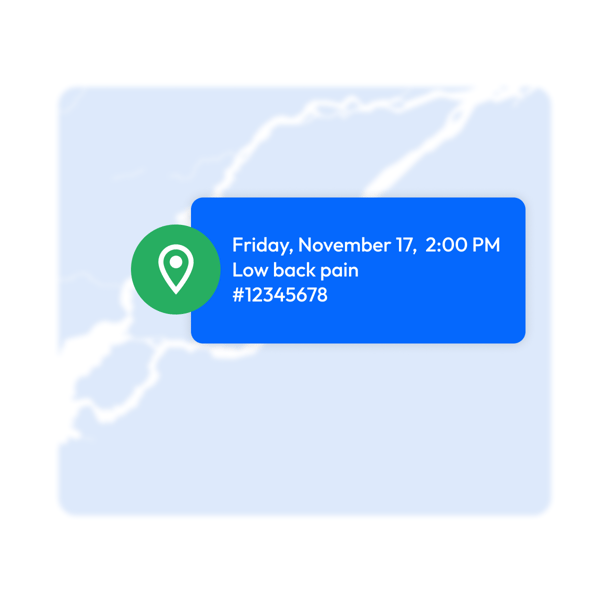
Appointment Within 48 Hours
The patient is given a medical appointment within the time slots dedicated to referrals and managed autonomously by the partner clinic or healthcare facility.
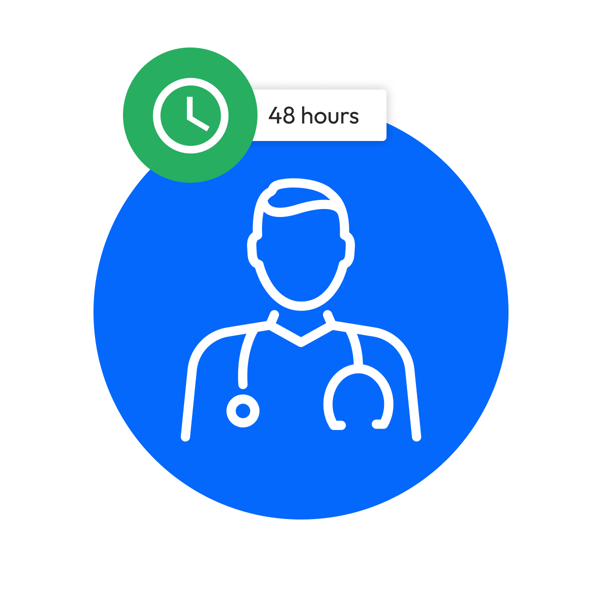
LGI Emergency Direction Overview
FAQ
What does your redirection model consist of?
Triage professionals utilize a solution backed by a medical algorithm developed through rigorous scientific studies. This solution helps identify patients who can be safely managed outside of emergency services, ensuring their transition to more appropriate care within a maximum of 48 hours.
What is the patients' response?
Over 95% of redirected patients believe that our redirection model should be implemented in all emergency services. This high satisfaction rate is largely attributed to the promptness with which patients leave the waiting room and the assurance that they will be seen by a doctor or healthcare professional.
How responsive are the nursing staff?
Over 99% of the surveyed nursing staff endorse the use of our redirection model. This high satisfaction rate is explained in particular by the solution's ease of use and its positive impact on patient.
What are the effects on emergency services?
Some emergency services have observed a reduction in wait times of up to 28%. However, it is important to note that these data vary depending on several factors.
What is more predictable is that with our model, approximately 15% of ambulatory patients are eligible for redirection, and 92% of eligible patients agree to be redirected. These results are much better than those obtained with other models.
What are the effects on clinics?
Clinics that receive redirected patients generally benefit from a reduction in the "no-show" rate as well as better predictability in the types of appointments to manage.
Indeed, the vast majority of patients redirected with our model attend their appointments (+94%), and the proportion of redirected cases becomes more predictable. For example, about 20% of the time slots reserved for redirection tend to treat dermatological cases.
Note that medical clinics are not the only type of healthcare facility that can receive redirected patients.
What studies does your model rely on?
Several studies have inspired our model. The most recent was published in a medical journal and is called Safety assessment of a redirection program using an electronic application for low-acuity patients visiting an emergency department.
Please do not hesitate to contact us if you would like more information on this or other studies considered in our model.
What do health authorities say about redirection?
Due to its positive effects on health, safety, and patient satisfaction, redirection is supported by many organizations, such as:
- CAEP (Canadian Association of Emergency Physician) – 2011
- AAEM (American Academy of Emergency Medicine) – 2013
- ACEP (American College of Emergency Physicians) – 2015
- Royal College of Emergency Medicine– United Kingdom– 2017
- NHS England – National Recommendation– 2017
- OIIQ (Ordre des infirmières et infirmiers du Québec)
- CMQ (Collège des médecins du Québec) – 2019
How long does it take to implement the redirection?
Once the partner network is well established, the solution can be deployed in just a few weeks. As for how long it takes to develop the network of partners who can welcome patients, this depends on a number of factors. Our team is well experienced in this field and will be able to guide you.
Is it possible to get an overview of the solution?
Absolutely. All you have to do is fill in this form and you'll receive a demonstration video by email.

Would you like to speak to someone instead?
Whether you want more information on deploying LGI Redirection, discuss your challenges in person, or find out how to develop a network of partner healthcare facilities for redirection, please feel free to contact us.